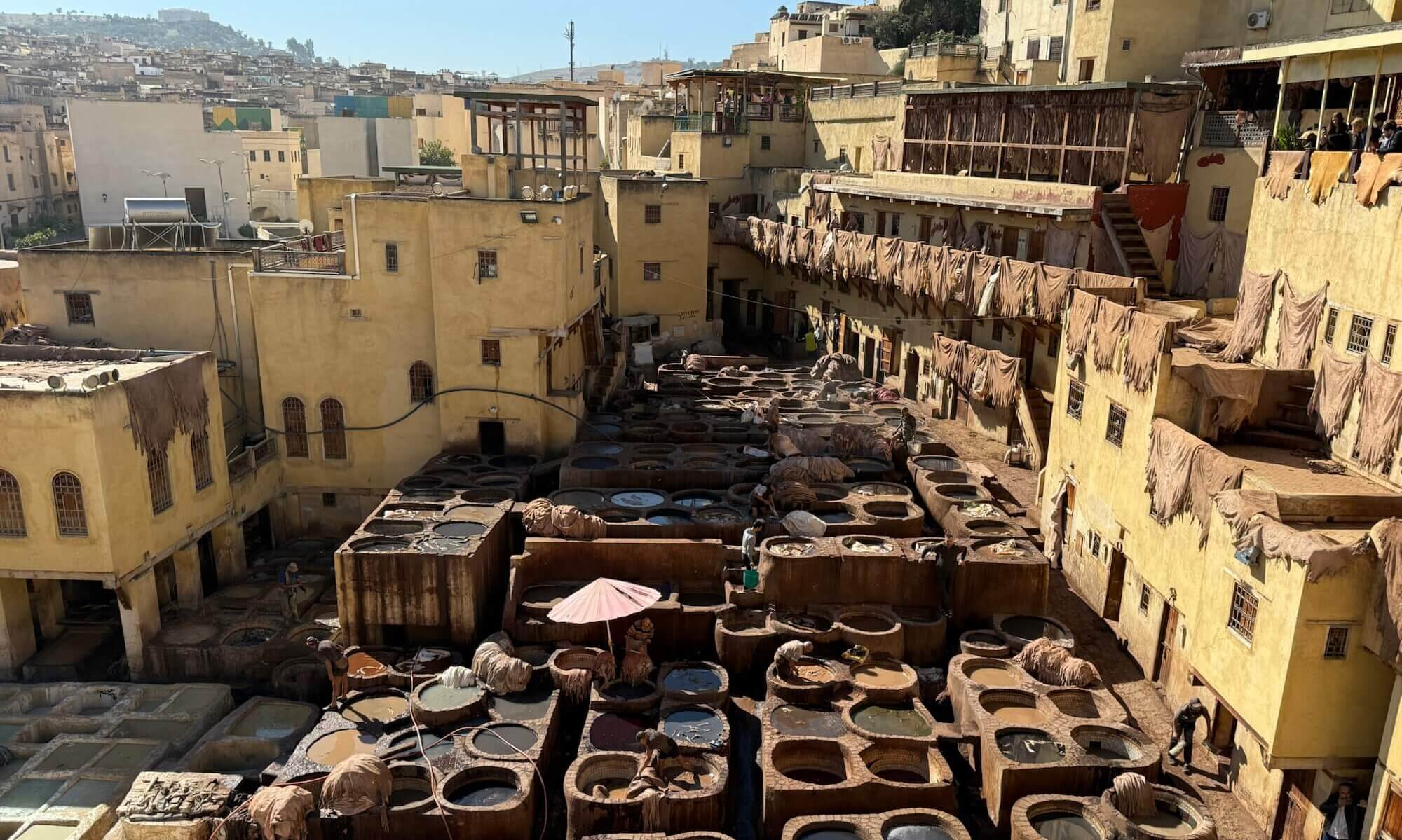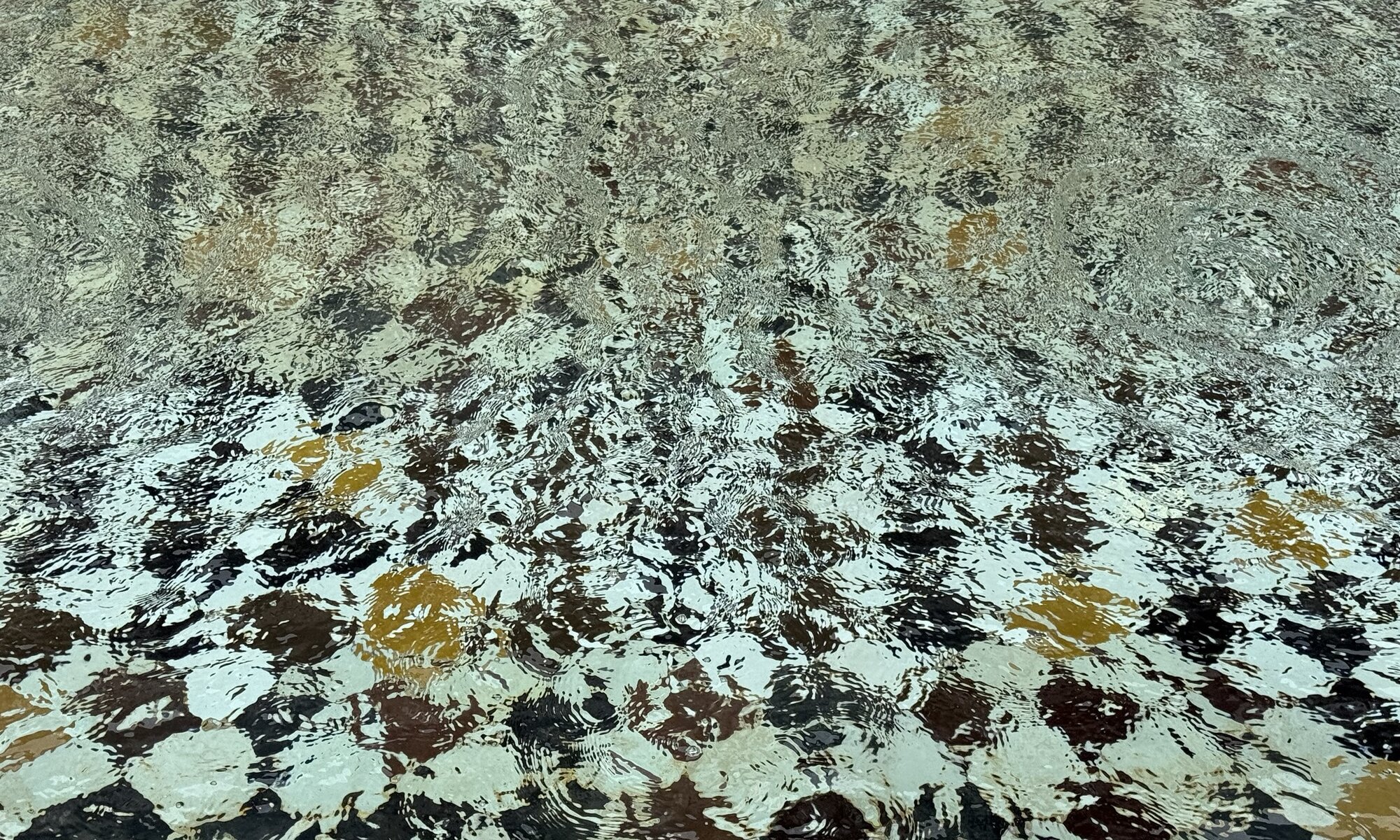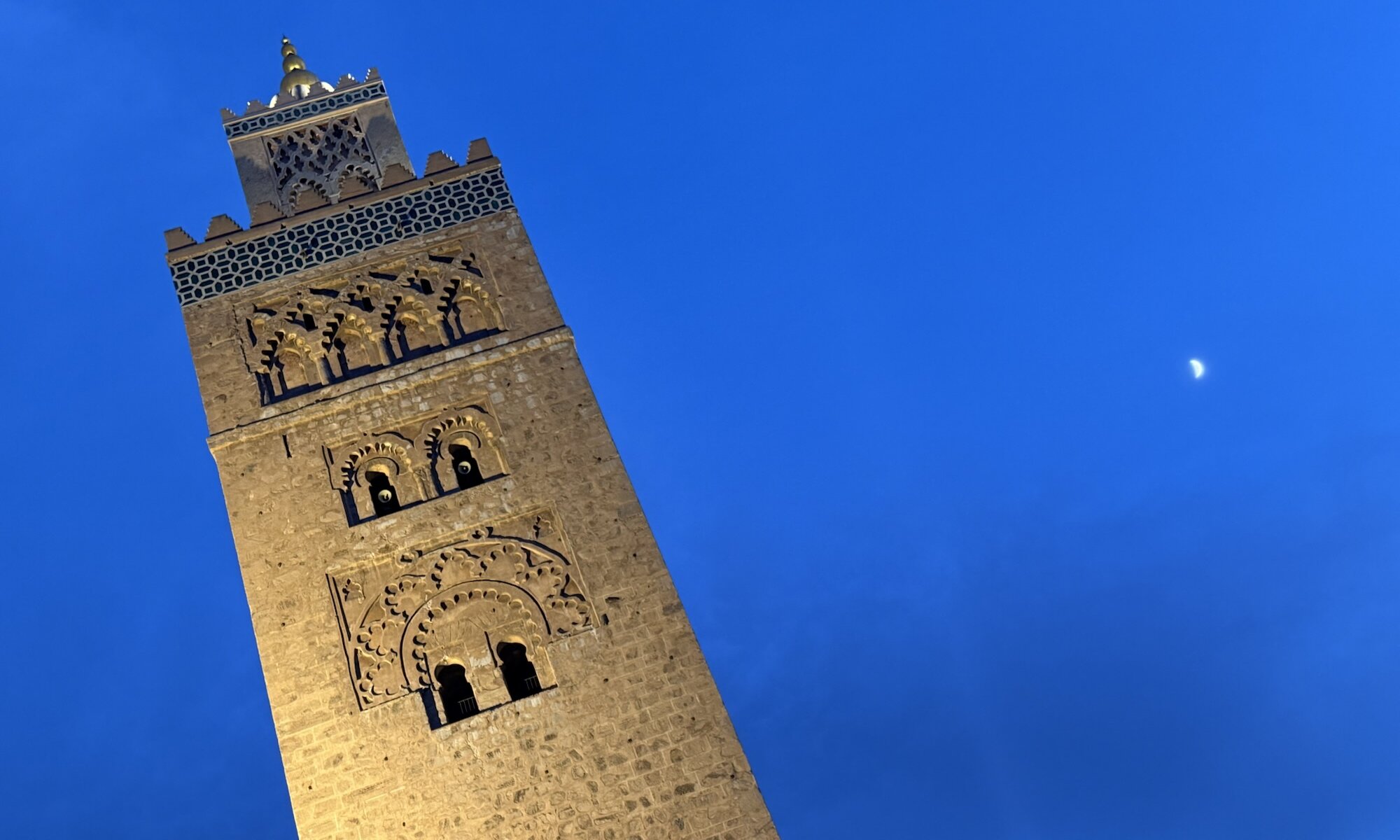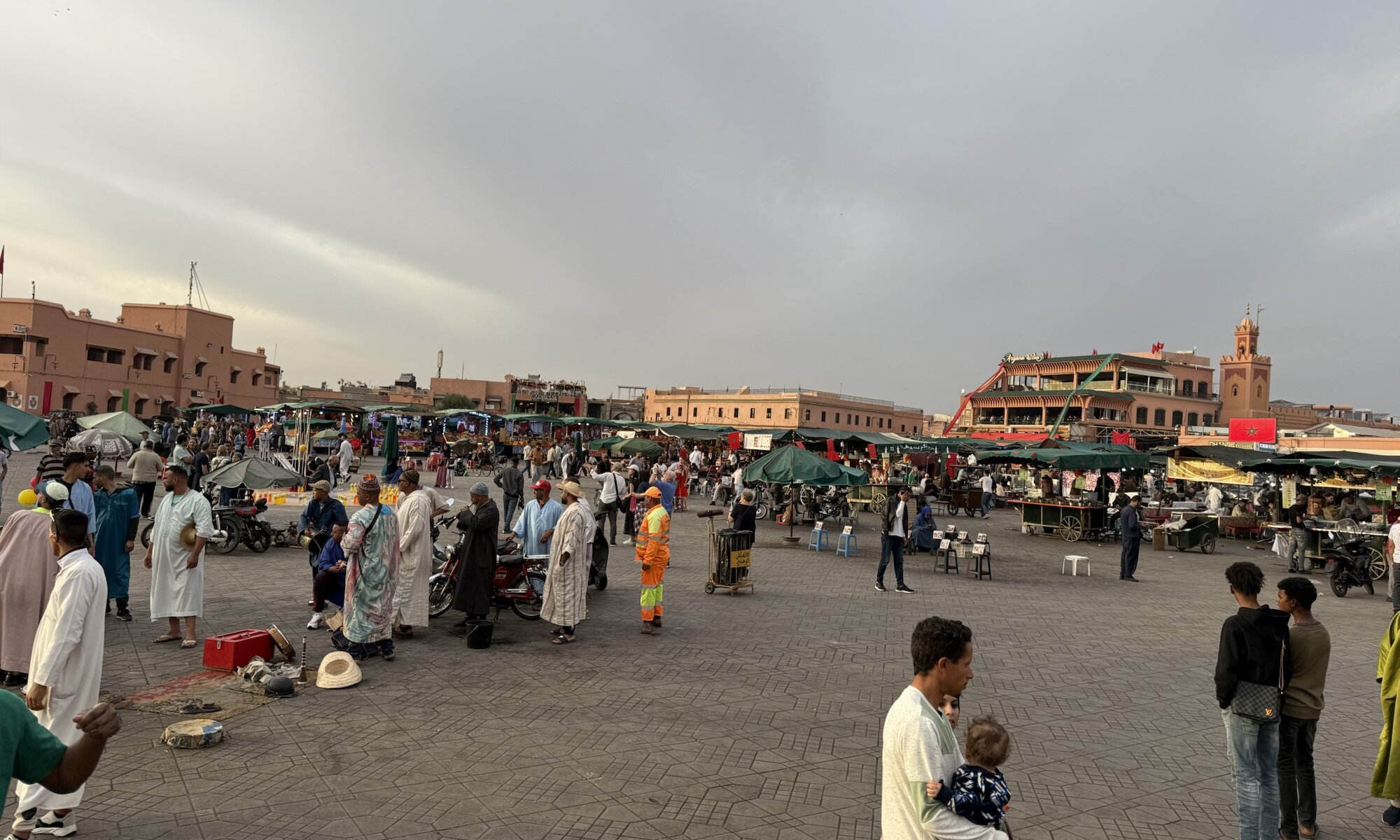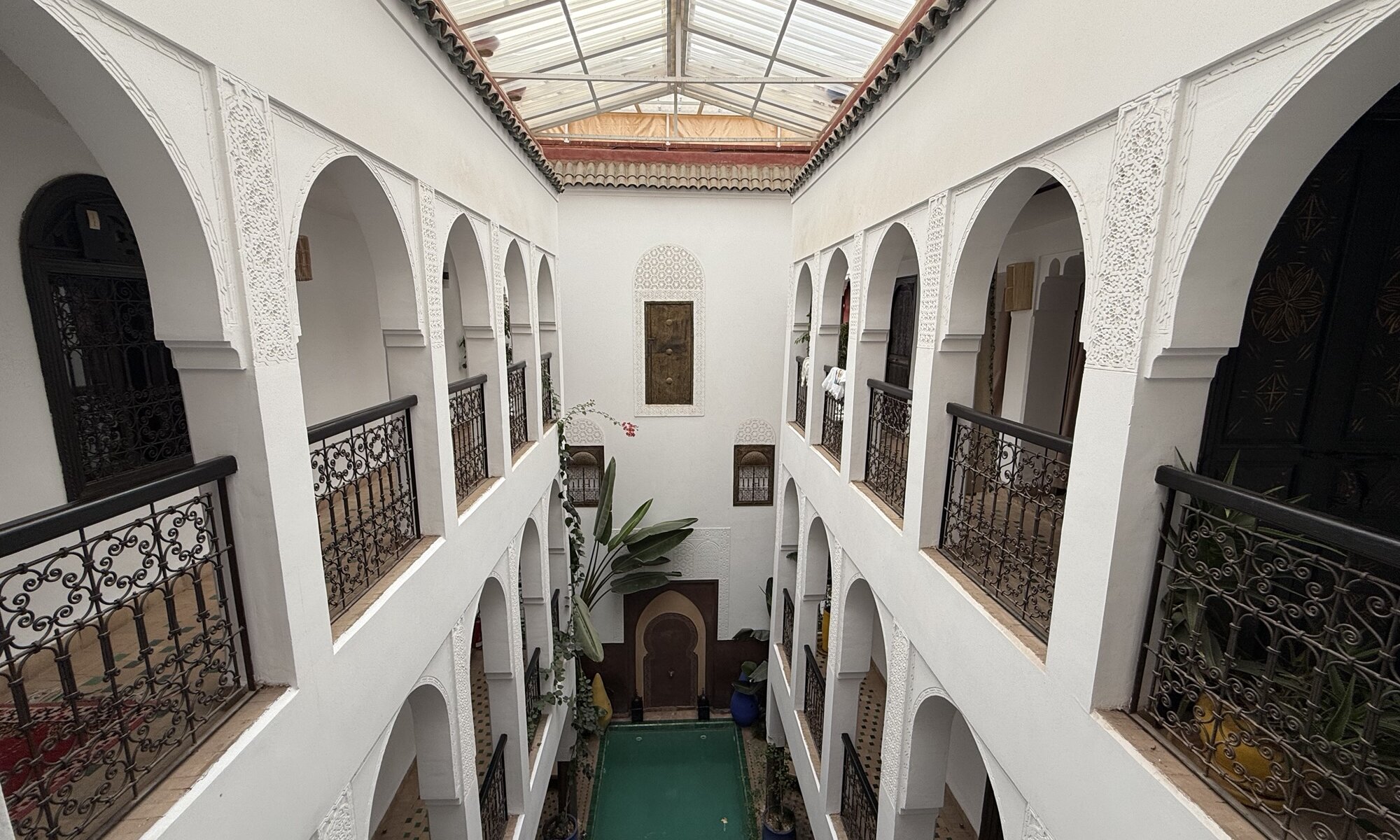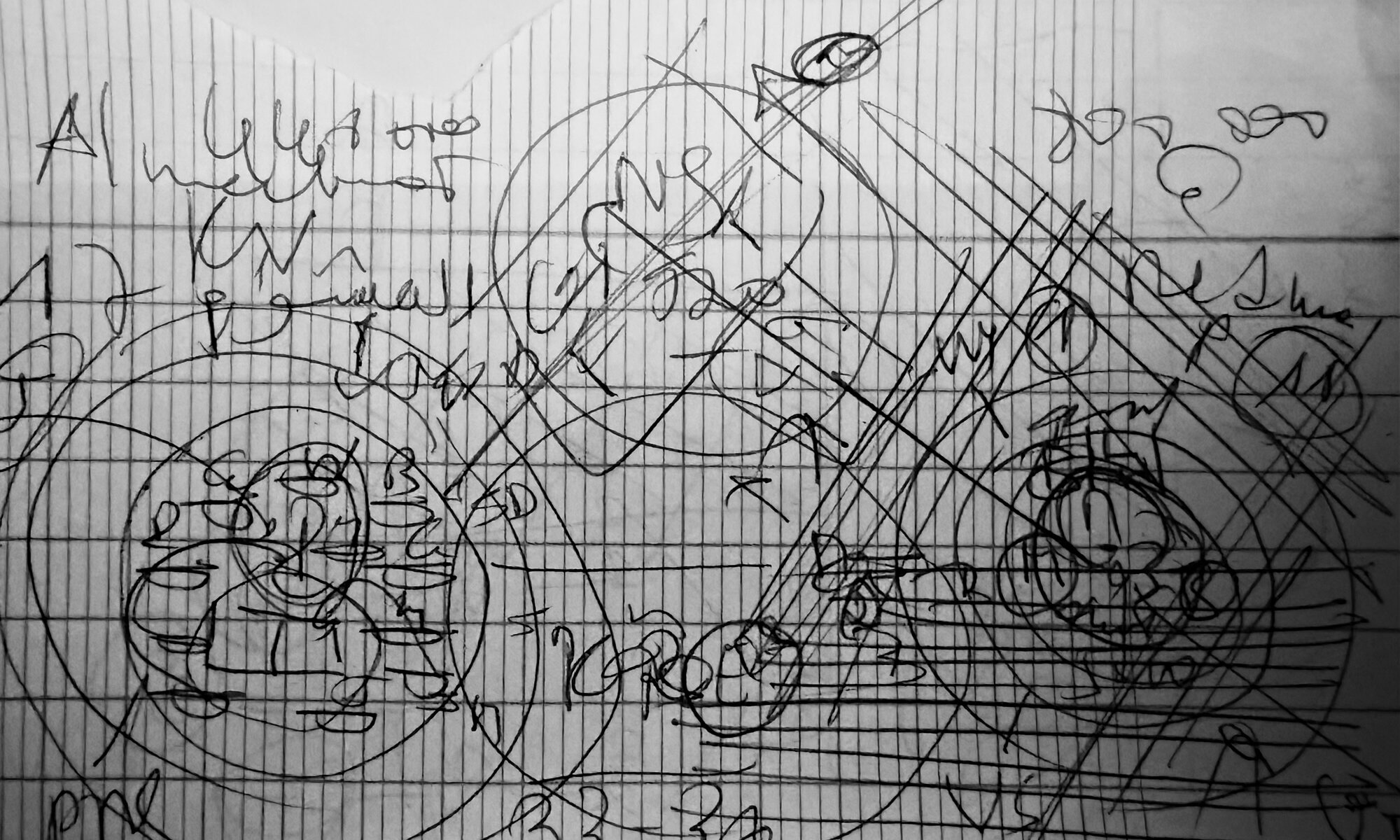The international airport of Marrakech (RAK) is located at the city quarter Ménara pretty close to the modern part of the city. It was opened 1942 as an airbase of the United States (like most airports at Morocco) and transports 2.5 million passengers each year with its one runway. That is just a third of the volume of the airport of the economic powerhouse, Casablanca. The modern airport building is connected via busses to the city, but because of the short distance also fixed-price taxis are a very valid option.
Continue reading “Marrakech-Ménara”Jardín Ménara
Where do the locals of Marrakech spend their Sunday afternoons? A lot of them you can find in the relaxed atmosphere of the Jardín Ménara, a vast olive grove in the southwest of the city. Between these olive trees people gather for a picnic, play and make music. Food and drinks are sold on the ways leading through the garden and to the large water reservoir in its center. The garden was created in 1156 by the rulers of the Almohad caliphate and today belongs to the Marrakech UNESCO world heritage site.
Continue reading “Jardín Ménara”Tombeaux des Saardiens
The Saadi dynasty at Morocco lasted from 1554 to 1667. They took over rulership after the Wattasid dynasty ended after Andalucía was finally lost to Spain. The Saadis extended Marrakech, defeated the Portuguese and after leader Ahmad al-Mansur died they had to hand over power to the Alaouites. The necropolis of the Saadi kings can be found at Marrakech, close to the Moulay al-Yazid mosque (or ‘kasbah mosque‘ because of its shape), accessible through the beautiful Bab Agnou gate.
Continue reading “Tombeaux des Saardiens”Palais de l‘incomparable
You’ll need some imagination to understand the former beauty of the Palais El-Badi, formerly a wonder of the Islamic world, now a ruin. Saadi ruler Ahmad al-Mansur ordered the creation in 1578 with finest decorations and especially with a vast water basin in the Andalusian style of Granada – like the Patio de los Leones but on much greater scale and with four buildings surrounding the water: the Koublat el Hadra, Koublat ed Dahab, Koublat el Hayzudran and the Koublat el Hamsinija.
Continue reading “Palais de l‘incomparable”Les milles nuits et une nuit
The Palais de la Bahia is the most beautiful palace of Marrakech, created at the end of the 19th century by Saadi grand vizier Si Moussa. It is one of the most visited sites of the city and unfortunately always full of tourists that enjoy the decorations made of marble, ceramic mosaics and cedar wood. Seven years were needed to finish this combination of rooms, gardens and courtyards. Most wonderful is the Grand Cour, a vast courtyard with a surrounding gallery.
Continue reading “Les milles nuits et une nuit”Eau de vie
The Medersa Ben Youssef is one of the most beautiful buildings of Marrakech and worth the effort of finding it in the medina north of the Jemaa el fna. It is an Islamic college with a large pool of water at its center and amazing decorations at its walls and roofs made of marble and cedar wood. The college dates back to the 14th century and was created in the style of the Marinid dynasty which was preserved when it was rebuilt during the Saadi dynasty in 1564. The Medersa Ben Youssef has three levels that you should consider exploring: on the first floor the rooms of the students can be visited, rather small cells.
Continue reading “Eau de vie”Koutoubia
Marrakech is called the ‘daughter of the desert‘ and it is located close to the Atlas mountain range which you can see everyday as the backdrop of the city. Marrakech itself is entirely flat which makes walking easy but navigation a bit more complicated if you don’t won’t to rely entirely on digital devices. Luckily there is one thing that stands out and serves like a lighthouse for visitors, visible from nearly everywhere in the city: the minaret of the Koutoubia mosque. It is 69 meters high and was built in the style of the Almoravid empire in the second half of the 11th century. Therefore you might recognize similarities to the minarets of Andalusia here.
Continue reading “Koutoubia”Daughter of the desert
Marrakech is called by different names: it is the ‘red city‘ (because of the color of the houses), the ‘pearl of the south‘, but also the ‘daughter of the desert‘ as it is located close to the Atlas mountains and the last stop before reaching the desert. In contrast to cities like Casablanca, Rabat, Agadir, Tangier and Essaouira it is not located at the coast or even close to it: Marrakech is at the inland and you’ll pass fantastic landscapes before reaching it. For many people the city is the dream location at Morocco and thereby it is also a very touristy city; for me it was the final stop of my tour by train through the country and therefore most things in the city weren’t surprising me anymore.
Continue reading “Daughter of the desert”Riad Khabia
The Medina of Marrakech is a place full of hustle and bustle. Good if you’ve got a Riad booked that serves you as a calm and quite place for the night. The Riad Khabia is located in a derb close to Rue Berrima in the South of the Medina. It feels a bit hidden but it is very good to reach and has nice rooms, very friendly staff and a good roof terrace with great views. But the best reason to book here is the location: you can walk to most of the important places easily.
Continue reading “Riad Khabia”Villes impériales
When people visit Morocco, they typically visit the four villes impériales: Fès, Meknès, Marrakech and Rabat. These four have been capital cities throughout time for different dynasties of rulers: Idrisids (Fès), Almoravids (Marrakech), Almohads (Marrakech), Marinids (Fès), Saadis (Marrakech, Fès) and Alaouites (Fès, Meknès, Rabat). They shaped their favorite cities, contributed new buildings to them and left their traces.
Continue reading “Villes impériales”